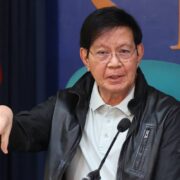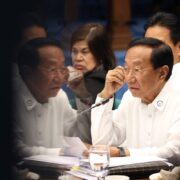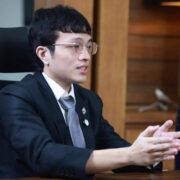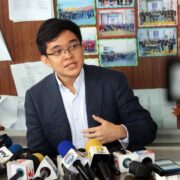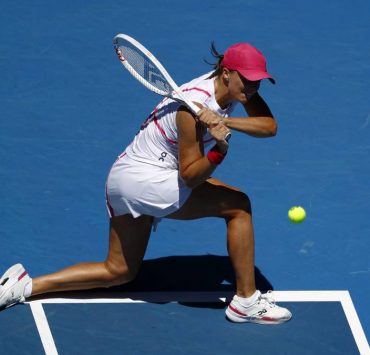For all ages: PH’s 1st recreational flight simulation facility
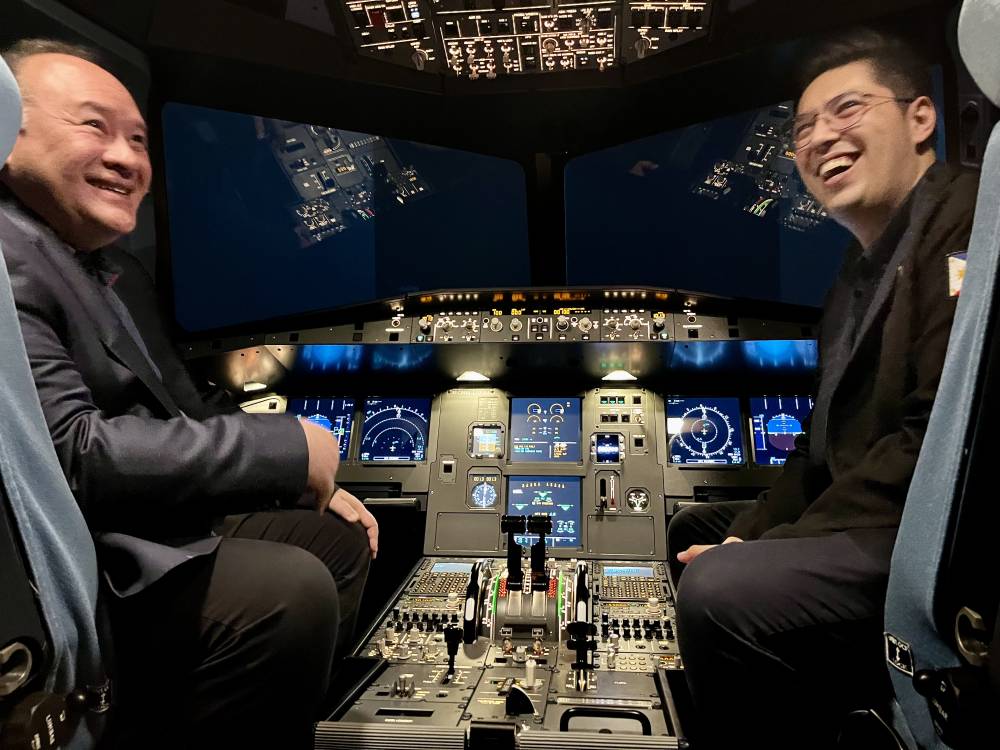
Inside the cockpit of the Airbus 320, you turn on the ignition control, operate the engine system and monitor the instruments and alert systems. But then your landing is rough due to your awkward use of automation. Can you get another chance to acquit yourself in an hour?The country’s first recreational flight simulation facility, Sputnik Aviation, allows that. In a 30- or 120-minute session, the pilot or student pilot is immersed in a simulated cockpit that provides a realistic experience of flying from such routes as Naia to Mactan, or Changi in Singapore to JFK in New York. “This is not a school,” maintained managing partner David de Koenigswarter. He likened Sputnik Aviation to Kumon, an enrichment or reinforcement learning center. It aims to fine-tune specific skills in operating an aircraft safely and impart good habits and discipline. Professionals and students focus on quality—gaining competence and knowledge—rather than merely clocking in the number of flying hours.
“I’m bringing the international perspective and show Pinoys a perspective of what’s out there,” said De Koenigswarter, who is ranked First Officer of an international commercial airline and has three pilot licenses.
Flying damaged planes
Pushing 34, he was been flying professionally for nine years and began his commercial aviation career in Air Asia Philippines. During the pandemic, he worked for an aircraft delivery company.
De Koenigswarter described the latter as a precarious job. He flew damaged and insect-infested aircraft due to long storage and transported them across the world to maintenance facilities. Once the planes were restored, he brought them to leasing companies for commercial flights.
He had since gained more proficiency after operating defective planes. “You were a pilot who also did engineering work. You took the planes out and had them checked,” he said.
De Koenigswarter explained that it’s a misconception that thousands of flying hours equate to longtime experience. In reality, the autopilot software in the cockpit does most of the work in getting the aircraft to the destination.
“The pilot is more of a systems manager,” said De Koenigswarter. Although the autopilot is safer, technology can also have its glitches. In such emergency situations, human effort is important in gaining control of the aircraft. Hence, pilots can drill their manual skills at Sputnik Aviation.
“If something goes wrong in the future, you would have the confidence to fly the plane manually,” he said.
The center uses a certified fixed-base flight simulator, which has a stationary base and a A320 cockpit wherein students learn to master standard operating and emergency procedures. De Koenigswarter explained that the full-motion flight simulator would cost millions of dollars and is too costly for a recreational facility. This set-up provides the experience of being airborne and can remake risky conditions such as disturbances.
Leveling up
Among the bookings, the 60-minute simulated Manila-Cebu flight has been the most popular. “The simulator can fast-forward the flight so you can reposition your landing. You can recreate situations for you to make a better take-off or landing,” said De Koenigswarter.
All age groups are welcome. Professional pilots come to level up their techniques. Students pilots enlist to supplement their learning and become more comfortable with the controls. High school students, who dream of becoming professionals, get acquainted with the flight simulator and flying conditions.
For children with their parents, the flight simulation is a visceral experience. The virtual wide expanse of skies stretching out from the cockpit windows is enthralling compared with view from the portholes on the passenger cabin.
“We’ve had 4- to 5-year-olds with their parents who are interested in aviation. They bring their kids to expose them to the cockpit. It stirs up their interest to become a pilot,” he said.
“It’s easy to teach the kids. They are amazed at the buttons, lights and controls. Children below seven years old must sit on the lap of the parent or guardian who is behind the controls. The flight coach will guide.”
Starting
Patrick, his 3-year-old son with Stephanie Mercado, daughter of the late athlete Lydia de Vega, has shown interest. The toddler was exposed to seeing his father working daily on the simulator on his computer at home. De Koenigswarter would let his son press the controls. The boy had since seen the progression from the home set-up to the professional cockpit simulation
He uses the visit to the facility as a positive reinforcement for his son. “Like any three-year-old, Patrick is hyper. I tell him, ‘You have to behave if you want to fly.’”
The tactic has been working. “On the first visit, he was awed by the lights and sounds. I let him sit on my lap and guide him. ‘Hold the joy stick. This is how you go up and down.’ Then we took off. He’s been very obedient in listening to instructions. My son is interested in flying, and he wants to do things properly,” he said,
“Through the visual system, you can see Manila, its landmarks, the ocean. There’s a bit of sightseeing. The children and their parents have never seen the view from the cockpit. You can simulate night time or sunrise. When I became a pilot, I saw the world another way. That is something children are astounded to see. It’s nice to fly with kids and parents to see things differently together.” —Contributed INQSputnik Aviation is at the Sparta Commune on Pioneer Street, Mandaluyong City.


